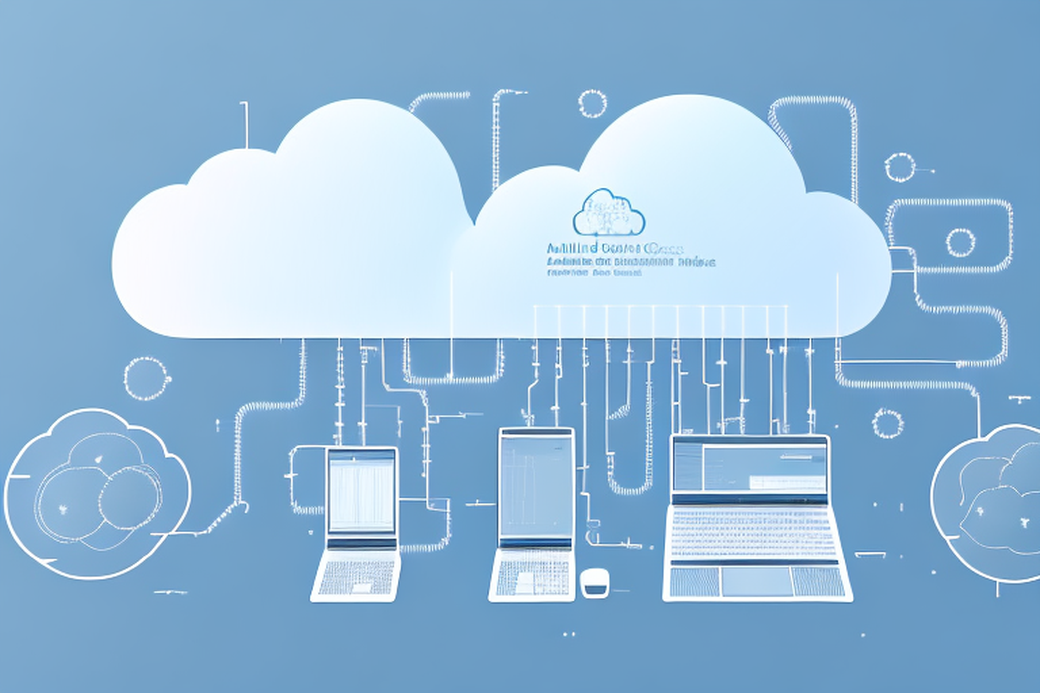Table of Contents
#Kubernetes RBAC Series
- Part 1: Introduction to Kubernetes RBAC
- Part 2: Understanding Kubernetes RBAC Components
- Part 3: The Complexity of Kubernetes RBAC
- Part 4: Top Reasons and the Impact of Kubernetes RBAC Complexity
- Part 5: Best Practices for Simplifying Kubernetes RBAC
Kubernetes has become the de facto standard for container orchestration. It provides a plethora of features, including resource management, load balancing, and automated scaling, to name a few. One core feature of Kubernetes is its role-based access control (RBAC) system which grants access to different Kubernetes resources based on the user’s role. While RBAC provides a way to control access to those resources, it comes with its own set of complexities that can have significant impacts on the management of Kubernetes clusters. This article will explore the top reasons for Kubernetes RBAC complexity and its impacts.
#The need for fine-grained access control in a multi-tenant environment
In a multi-tenant environment, where different tenants share the same resources, it is important to ensure that each tenant can only access and modify their own resources. This is where fine-grained access control comes into play. Fine-grained access control allows for the creation of policies that dictate which users or groups can access which resources, and what actions they can perform on those resources.
One of the most popular tools for implementing fine-grained access control in Kubernetes is RBAC (Role-Based Access Control). RBAC allows for the creation of roles and bindings that dictate which users or groups can access which resources and what actions they can perform on those resources.
However, implementing RBAC policies in Kubernetes can be challenging, especially for developers and IT administrators who are not familiar with Kubernetes or who lack the necessary skills to implement RBAC policies. This is because RBAC policies require a deep understanding of Kubernetes' resources and its underlying API.
Moreover, defining different RBAC policies for various tenants and use cases can lead to an explosion of RBAC roles and bindings. This can make RBAC policies difficult to manage and can increase the risk of inadvertently granting access to unauthorized parties.
Therefore, it is important to design RBAC policies carefully and to ensure that they are regularly reviewed and updated. A poorly designed RBAC policy can inadvertently grant access to unauthorized parties, exposing Kubernetes clusters and their resources to potential security breaches and compromise.
In conclusion, fine-grained access control is essential in a multi-tenant environment to ensure that each tenant can only access and modify their own resources. Kubernetes RBAC provides the necessary tools to achieve this, but it requires careful design and management to ensure that RBAC policies are effective and secure.
#The extensibility and flexibility of the Kubernetes API
The Kubernetes API is a powerful tool that enables developers to build and manage complex containerized applications. One of its key strengths is its flexibility and extensibility, which allows developers to customize and extend the platform to meet their specific needs.
At the heart of this flexibility is the ability to create custom Kubernetes resources, such as custom resource definitions (CRDs). These resources can be used to define new types of objects that can be managed by Kubernetes, and can be tailored to the specific requirements of different clusters and workloads.
For example, a development team might create a custom resource to manage a specific type of database that is used in their application. By defining this resource, they can take advantage of Kubernetes' powerful orchestration capabilities to manage this database alongside their other application components.
However, while this flexibility is beneficial, it also introduces another layer of complexity to the Kubernetes RBAC system. RBAC (role-based access control) is a critical component of Kubernetes security, and is used to control access to the API server and other Kubernetes resources.
When developers create custom resources, they may also need to create custom RBAC policies to control access to those resources. This can be challenging, as it requires a deep understanding of the RBAC system and the specific requirements of the custom resource.
Errors in policy creation can lead to unauthorized access and compromise of the Kubernetes cluster. For this reason, it’s essential to carefully review and test any custom RBAC policies before deploying them to a production environment.
Despite these challenges, the flexibility and extensibility of the Kubernetes API are key strengths that enable developers to build powerful and customized containerized applications. By leveraging custom resources and RBAC policies, development teams can create solutions that meet their specific needs, while still taking advantage of the robust orchestration and management capabilities of Kubernetes.
#Balancing security requirements with ease of use and management
RBAC’s primary purpose is to enhance the security of Kubernetes clusters by controlling which users have access to which resources. This is an essential feature of Kubernetes, as it ensures that only authorized users can access sensitive data and perform critical operations within the cluster.
However, as RBAC policies increase in complexity, they can negatively impact the ease of use and management of Kubernetes clusters. This is particularly true in large-scale deployments, where managing RBAC policies can become a daunting task.
One of the challenges of RBAC is that as more roles are created to control access to specific resources, it becomes harder to keep track of which roles and bindings are configured correctly. This, consequently, leads to increased vulnerability, as human error and misconfigurations can go unnoticed, creating security holes in the Kubernetes cluster.
To address this challenge, it is essential to strike a balance between security requirements and ease of use and management. One way to achieve this is by adopting a systematic approach to RBAC policy management, which involves regularly reviewing and updating RBAC policies to ensure they are aligned with the organization’s security requirements.
Another approach is to use RBAC tools that simplify policy management, such as Kubernetes RBAC Manager, which automates the creation and management of RBAC policies. This tool can help reduce the complexity of RBAC policies and ensure that they are configured correctly, reducing the risk of misconfigurations and security holes.
Additionally, it is essential to provide training and support to Kubernetes administrators and developers to ensure they understand the importance of RBAC and are equipped with the knowledge and skills to manage RBAC policies effectively. This can help reduce the likelihood of misconfigurations and human error, which can lead to security vulnerabilities.
In conclusion, RBAC is a critical feature of Kubernetes that enhances the security of Kubernetes clusters. However, it is essential to balance security requirements with ease of use and management to ensure that RBAC policies are effective and do not create unnecessary complexity. By adopting a systematic approach to RBAC policy management, using RBAC tools, and providing training and support to Kubernetes administrators and developers, organizations can effectively manage RBAC policies and reduce the risk of security vulnerabilities.
#Impact 1: Increased management overhead and potential for human error
RBAC policies are a critical component of securing a Kubernetes cluster, but they require ongoing management and monitoring to ensure that they remain effective. As the cluster grows and changes over time, RBAC rules must be updated to reflect new resources, users, and roles. This can be a time-consuming and error-prone process, especially when managing large, complex clusters.
Moreover, scaling the cluster can also be a challenge when it comes to RBAC policies. Adding new nodes to the cluster means ensuring that they have the appropriate permissions and access control policies in place. This can be a complex task, especially when dealing with clusters that span multiple regions or cloud providers.
As the number of roles and bindings in the RBAC system grows, so does the management overhead and the potential for human error. A single misconfiguration or oversight in RBAC policy creation can lead to unauthorized access and, consequently, a breach of the Kubernetes cluster. This underscores the importance of having a rigorous RBAC management process in place, including regular audits and reviews of RBAC policies.
#Impact 2: Difficulty in maintaining consistent access policies across clusters
Kubernetes clusters have become increasingly popular for their ability to scale and manage containerized applications. However, as organizations adopt Kubernetes, they often face the challenge of maintaining consistent access policies across clusters.
One of the main reasons for this difficulty is the variance in size, workload, and use cases of different Kubernetes clusters. For example, a development cluster may have different access policies than a production cluster. Additionally, different teams within an organization may have different requirements for accessing and managing the clusters.
As a result, organizations may find themselves managing multiple access policies across different clusters, which can lead to a lack of standardization and a proliferation of policy management processes. This fragmentation makes it harder to maintain visibility into the entire security posture of the organization.
To address this challenge, organizations can consider implementing a centralized policy management system that allows them to define and enforce policies across all of their Kubernetes clusters. This can help ensure consistency and simplify policy management, while also providing greater visibility into the security posture of the organization.
Another approach is to establish a set of best practices for access policies that can be applied across all Kubernetes clusters. This can help ensure that all clusters are secure and compliant with organizational policies, while also reducing the complexity of policy management.
In conclusion, the difficulty of maintaining consistent access policies across Kubernetes clusters is a challenge that many organizations face. However, by implementing a centralized policy management system or establishing best practices for access policies, organizations can simplify policy management and ensure greater consistency and security across their clusters.
#Impact 3: The risk of misconfigurations leading to security vulnerabilities
Misconfigurations are a common occurrence in complex systems like Kubernetes clusters. These misconfigurations can lead to a plethora of security vulnerabilities, which can ultimately compromise the entire system. One of the most significant risks introduced by RBAC complexities is the risk of misconfigurations. According to recent studies, over 90% of breaches in cloud environments occur as a result of misconfigurations.
One of the primary reasons why Kubernetes clusters are particularly vulnerable to misconfigurations is the sheer number of resources involved. With so many moving parts, it can be challenging to keep track of every configuration setting and ensure that they are all set up correctly. Additionally, the complexity of the RBAC system can make it difficult for even experienced administrators to manage.
When a misconfiguration occurs in a Kubernetes cluster, it can have severe consequences. For example, a misconfigured role or binding can lead to unauthorized access to sensitive data, which can ultimately result in data theft. This can compromise the entire organization’s security posture, leading to reputational damage and significant financial losses.
Fortunately, there are steps that organizations can take to reduce the risk of misconfigurations in their Kubernetes clusters. For example, implementing automated configuration management tools can help ensure that all configurations are set up correctly and consistently across the entire system. Additionally, regular security audits can help identify potential vulnerabilities before they can be exploited by attackers.
Ultimately, the risk of misconfigurations leading to security vulnerabilities is a significant concern for organizations using Kubernetes clusters. By taking proactive steps to manage configurations and regularly auditing their security posture, organizations can help reduce the risk of a breach and protect their sensitive data from unauthorized access.
#Conclusion
Kubernetes RBAC provides a powerful way to control access to Kubernetes resources. However, it does come with a set of complexities that can have significant impacts on cluster management and security. To mitigate these complexities, organizations must invest in skilled personnel, automated policy management tools, and constant monitoring. By doing so, organizations can reduce the risk of unauthorized access and keep their Kubernetes clusters secure.
#Additional Articles You May Like
- Kubernetes Multi-tenancy and RBAC - Implementation and Security Considerations
- Kubernetes Multi-tenancy and RBAC - Management, Automation, Monitoring, and Auditing
- Kubernetes Multi-tenancy and RBAC - Advanced Scenarios and Customization
- Managing Kubernetes RBAC configurations with GitOps - Getting Started and Practical Example
- Managing Kubernetes RBAC configurations with GitOps - Monitoring, Auditing, Templates and Automation, Security Considerations
- Best practices for managing Kubernetes RBAC with GitOps
- GitOps + Kubernetes: Managing Kubernetes Secrets










